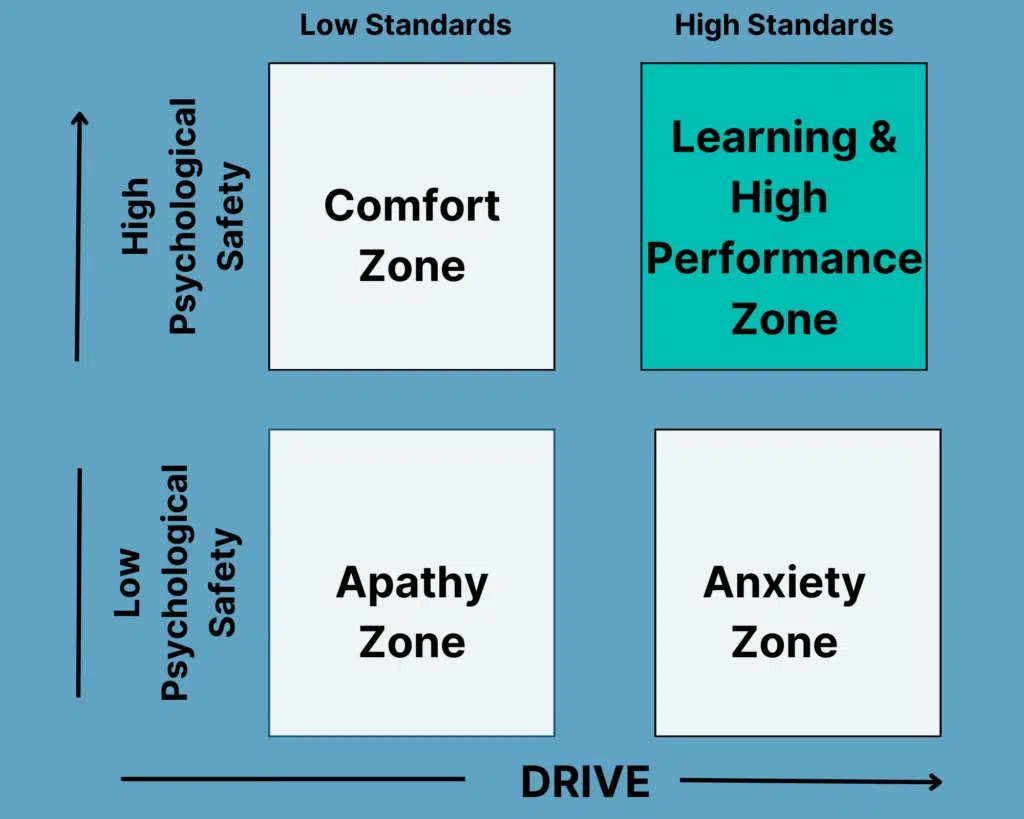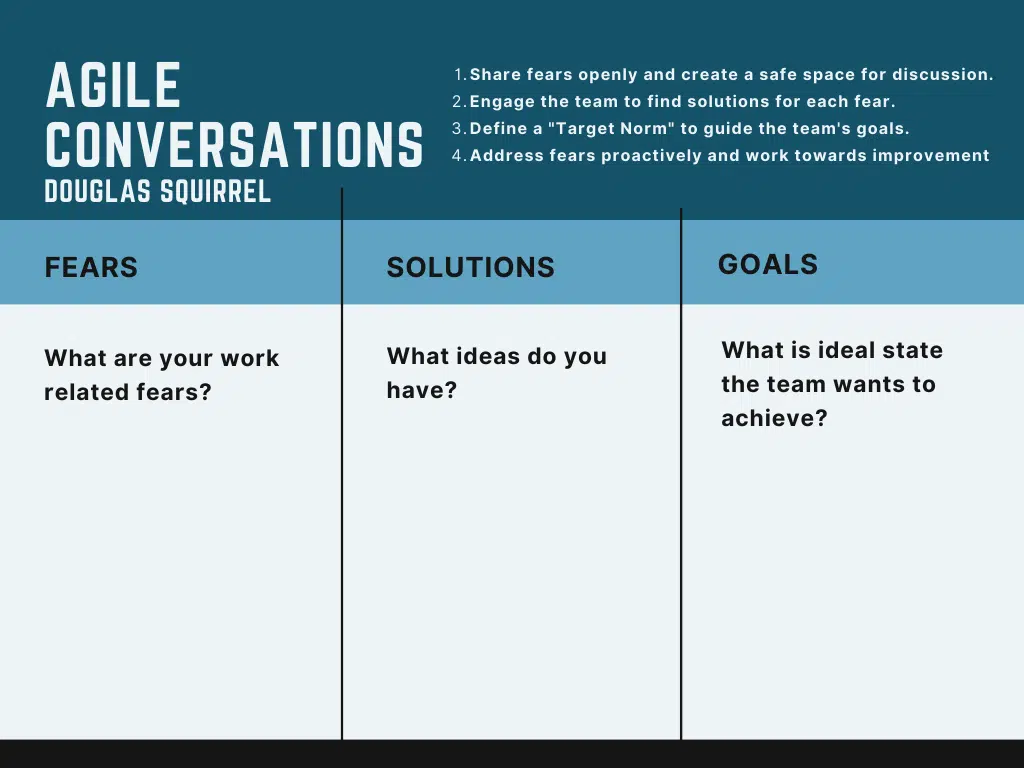Build and Unlock the Learning Zone for High Performance
Amy Edmondson describes the concept of the learning zone and its correlation with team performance in her book “The Fearless Organization: Creating Psychological Safety in the Workplace for Learning, Innovation, and Growth.” The learning zone is the sweet spot and desired goal. When we learn together, it bonds us and strengthens workplace culture. In the learning zone, teams experience high psychological safety. This elicits a solid drive to innovate, collaborate, coordinate, and perform. This blog will dive deeper into Amy’s work on building and unlocking the learning zone for high performance. We will also explore the different zones teams land.
Psychological Safety: The Foundation of the Learning Zone
Amy says that “psychological safety is a shared belief held by team members that the team is safe for interpersonal risk-taking. It is a sense of confidence that the team will not embarrass, reject, or punish someone for speaking up or offering ideas.”
When psychological safety is high within a team, they flourish, and it sets the stage for learning, collaboration, and innovation.
When psychological safety is low, teams languish and land in the anxiety and apathy zone.
What are the Different Zones?
Raise the standards: What are you doing to Build and Unlock the Learning Zone for High Performance?
Learning & High-Performance Zone:
The sweet spot for teams is where they experience high psychological safety and a strong desire to achieve results. Team members are open to taking risks and strive to learn and improve. This zone includes:
- Seeking and applying feedback
- Taking accountability
- Setting challenging goals
- Embracing growth opportunities
- Pursuing continuous improvement
- Encouraging collaboration and knowledge-sharing
- Embracing innovation and creativity
- Having high accountability and commitment to standards
Comfort Zone:
A team that feels safe but lacks the drive to succeed may handle it comfortably but won’t reach its full potential. This zone includes:
- Sticking to familiar routines
- Avoiding risks or challenges
- Resisting feedback or change
- Remaining comfortable
Apathy Zone:
When a team lacks psychological safety and motivation, they will be unhappy and unenthusiastic about their work. This zone includes:
- Avoiding risks or challenges
- Stagnating and relying on existing knowledge
- Sticking to the familiar.
Anxiety Zone:
If a team has low psychological safety but is highly driven, it can lead to high stress and anxiety levels. (Often, we see this in competitive sales teams where individuals are pitted against each other). This zone includes:
- Having fear and dread.
- Being competitive
- Operating in a high-stress environment
- Diminishing Well-Being
How to Build and Unlock the Learning Zone for High Performance?
Do a Safety Check: Where is your team?
Evaluate where individuals and team members operate. Implement in-service training, and conduct an interactive and dynamic workshop to foster learning together. Build psychological safety initiatives to create a productive culture.
Discuss Work-Related Fears, Solutions, Ideas, and Goals/Ideal States
Conclusion:
Psychological safety is vital to unlocking the learning zone and driving high performance. The team can thrive and achieve remarkable results by creating an environment where individuals feel safe to take risks and share ideas. What does your team need to start doing, continue or stop doing?
Source: Edmondson, A.C. (2018). The Fearless Organization: Creating Psychological Safety in the Workplace for Learning, Innovation, and Growth. John Wiley & Sons.
Recommended Reading
Psychological safety: Crack the work behavior code
Watch Simon Sinek’s TedTalk: Why good leaders make you feel safe
Meet Jodie, your Culture & Transformation Captain. With over twenty years helping people change, facilitating team discussions, building cultures, designing, implementing and teaching classes, your organization is in good hands.






